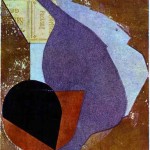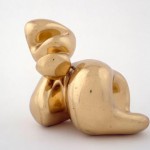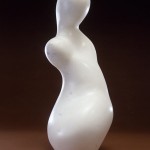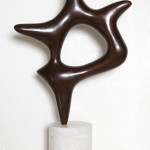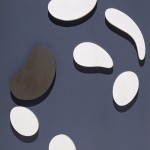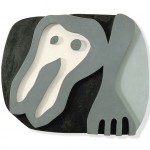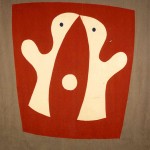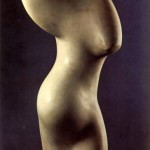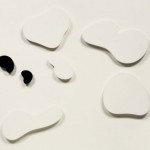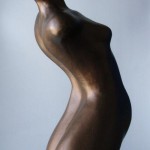Jean Arp
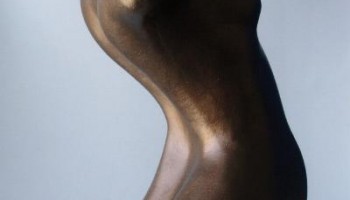
Born Hans Arp in Strasbourg, Germany on September 16 1886, He was a distinguished sculptor, painter and poet.
He studied art at the Strasbourg School of Arts and Crafts in Weimar from 1905 to 1907, and moved to Paris in 1908 to study at the Julian Academy. He was also a poet and a founder member of the group “Der Moderne Bund” (The Modern Alliance) in 1911. In 1912 he went to Munich where he joined Kandinsky and exhibited semi-figurative drawings at the second Blaue Reiter exhibition. He also a contributed to Der Blaue Reiter Almanach (The Blue Rider Almanac).
He returned to France in 1914 and traveled to Switzerland the following year. In 1915 he met his future wife, artist Sophie Taeuber and together they created collages made from paper fragments.
Click here to expand this biography
Jean Arp and Sophie Taeuber were married in 1922 and moved to Paris in 1925 where he joined the surrealist movement and participated in the first Surrealist exhibition in Paris. He became a French citizen in 1926 and organized his first one-man exhibition in 1927. Arp’s art began to evolve and his forms became more fluid, more sensuous and organic. He also began experimenting with automatic composition (automatism), creating free flowing forms that suggest the absence of intentional consciousness or inhibition. In 1931 he broke with the surrealists and became co-founder of the group Abstraction-Creation. It is at this time his work started leaning towards three dimensional sculpture.
When the war erupted in Europe, Arp gallicised his first name to Jean (Jean is French for Hans). From 1941 to 1943, Jean and his wife Sophie took refuge in an art colony they founded in Grasse, a small village located in the South of France. Sophie Taeuber-Arp died during a visit to Switzerland in 1943.
Arp traveled to the United States in 1949 and 1950 where he was commissioned to create a monumental wood and metal relief for Harvard University. He was also commissioned to create a relief for the UNESCO Building in Paris in 1958.
Jean Arp died June 7, 1966 in Basel, Switzerland. He will forever be remembered as an influential figure within Dada, Surrealism and abstract art as a whole. His work has played a crucial role in the development of modern sculpture in the 20th century.
- Jean Arp in his studio
- Collage on Paper – 1914
- Overturned Blue Shoe with Two Heels Under a Black Vault – 1925
- Head and Shell – 1933
- The Woman of Delos – 1959
- Torso Fruit – 1960
- The Star
- Six White Forms and One Gray Make a Constellation on a Blue Ground
- Plastron et fourchette-Shirtfront-and-Fork
- Porte d’oiseaux – 1960-61
- Mujer
- Constellation with Five White Forms and Two Black, Variation III
- Absinthe


